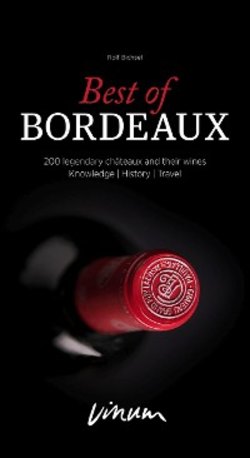Читать книгу Best of Bordeaux - Rolf Bichsel - Страница 57
Оглавление57
Right bank Appellations
Saint-Emilion
5,500 hectares of vines I 800 producers I 35 million bottles a year
Nine communes around the small town of Saint-Emilion, around 50 kilometres
east of Bordeaux, are entitled to use this AOC. The principal variety is Merlot.
The Saint-Emilion Grand Cru designation is reassessed every year, while the
Saint-Emilion Grand Cru Classé A (4 estates), Premier Grand Cru Classé B (14
estates) and Grand Cru Classé (65 estates) classifications are reviewed every ten
years or so. The best wines come from the limestone plateau and its slopes of
clay over limestone around the town, and from a gravel, clay and sand terrace
to the north-west of the region (commune of Figeac – Cheval Blanc). The soils at
the foot of these slopes (Pied de Côtes) consist of clay, sand and gravel. Merlot
(around 60%) is supplemented by Cabernet Franc and a little Cabernet Sauvi-
gnon. Specific locations have a signi
fi
cant impact on the style: subtle and excep-
tionally elegant but with good aging potential (plateau), lively and dense medi-
um-bodied wines (slopes and lowlands), particularly fruity with character and
finesse (Figeac), characterised by woody notes and rich in extract in the style of
a Bolgheri (modernists), or compact and sharp (lowlands along the Dordogne).
Pomerol
800 hectares of vines I 150 winemakers I 4 million bottles a year
Pomerol, an oval four kilometres long and three kilometres wide on the right
banks of the Garonne and Dordogne, is the smallest of the large Bordeaux ap-
pellations in terms of size. The best ferrous loam soils with varying proportions
of clay and gravel can be found on the ‘plateau' around the church. In the west
towards the Isle – the Gironde's third river – the soils contain clay and sand and
produce lighter wines. In the east, Pomerol adjoins the vineyards of Saint-Emil-
ion (Figeac and Cheval Blanc estates). Merlot is the main variety at 80% and
produces elegant, velvety, full-bodied yet smooth wines.
Fronsac / Canon-Fronsac
1,100 hectares of vines I 150 producers I Around 8 million bottles a year
These two neighbouring appellations stand on a horseshoe-shaped chain of
hills between the Dordogne and the Isle, at a somewhat higher altitude than
those in Pomerol and Saint-Emilion in a relatively windy location, which has a
major impact on the maturation process and style of wine. Only a few winemak-
ers, mostly members of the Expression de Fronsac cooperative, produce great
wines. Clay over molasse and limestone soils, around 80% of which are planted
with Merlot, produce the most ‘Italian' of all the Bordeaux wines with angular
yet also astonishingly fresh tannins, offering extract and high levels of alcohol
which ensure long aging in the best examples.
